notApplicable
Type of resources
Available actions
Topics
Keywords
Contact for the resource
Provided by
Years
Formats
Representation types
Update frequencies
Scale
Resolution
-

Major and trace element composition, and stable isotope data for whole-rock samples from alkaline rocks of the Chilwa Province. Samples collected between 2011-2021 in the Chilwa Alkaline Province, Malawi
-

Peat properties data and age depth models for 102 peat cores extracted and analysed for the Increased Carbon Accumulation in Arctic Peatlands (ICAAP) project (Grant NE/S001166/1). Peat cores were extracted from 12 peatland sites from four regions of the Arctic: Svalbard (78.09065°N 14.98407°E; 78.98595°N, 11.98246°E; and 78.95872°N, 11.68331°E), Norwegian and Finnish Lapland (70.11876°N, 28.48351°E; 69.80659°N, 27.19732°E; and 69.38787°N, 24.24123°E), Nunavut, Canada (72.655515°N, 78.061646°W; 72.694207°N, 77.864603°W; and 73.13028°N, 80.022987°W), and Quebec, Canada (62.165681°N, 75.915017°W; 62.123168°N, 75.769467°W; and 62.157355°N, 75.607301°W). Data originates from the analysis of Arctic peat cores for changes in rates of lateral expansion and vertical peat accumulation during recent centuries. Specifically, peat cores were analysed for moisture content (%), dry bulk density (g cm-3), C/N content (%), 210Pb activity levels (bq/kg), and 14C radiocarbon age (yr BP).
-
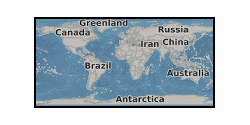
Controlled CO2 release experiments and studies of natural CO2 seeps have been undertaken at sites across the globe for CCS applications. The scientific motivation, experimental design, baseline assessment and CO2 detection and monitoring equipment deployed vary significantly between these study sites, addressing questions including impacts on benthic communities, testing of novel monitoring technologies, quantifying seep formation/style and determining CO2 flux rates. A review and synthesis of these sites studied for CCS will provide valuable information to: i. Enable the design of effective monitoring and survey strategies ii. Identify realistic site-specific environmental and ecosystem impact scenarios iii. Rationalise regulatory definitions with what is scientifically likely or achievable iv. Guide novel future scientific studies at natural or artificial release sites. Two global databases were constructed in Spring 2013, informed by a wide literature review and, where appropriate, contact with the research project leader. i. Artificial CO2 release sites ii. Natural CO2 seeps studied for CCS purposes The location and select information from each of these datasets are intended to be displayed as separate GoogleMap files which can be embedded in the QICS or UKCCSRC web server. These databases are not expected to be complete. Information should be added as more publications or become available or more case studies emerge or are set up. To facilitate this process, a contact email should be included beneath the map to allow viewers to recommend new or overlooked study sites for the dataset. Grant number: UKCCSRC-C1-31. These data are currently restricted.
-
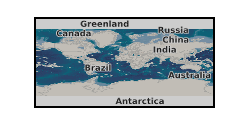
Measurement and monitoring of CO2 flows across the entire CCS chain are essential to ensure accurate accounting of captured CO2 and help prevent leaking during transportation to and from storage sites. This particular R&D need has been identified as one of the highest priority areas in the latest APGTF Strategy Report and in the UKCCSRC RAPID Handbook as well as in a recent study by NEL. The need for addressing measurement uncertainty and its importance for CO2 flows is a key factor in the CCS chain. The accurate measurement of CO2 is also vital to lift the strict regulations from legislative bodies off the full deployment of CCS and create a more positive public perception towards CCS. In addition, it is imperative to investigate the flow metering aspects of CO2 to inform the legislators and regulators and to have this underpinning knowledge available to the providers of the design, build and operation of CCS plants. In this project a cutting-edge technology for the measurement of CO2 flows in CCS pipelines will be developed. The technology will incorporate multi-modal sensing and statistical data fusion techniques. General-purpose flow sensors, including Averaging Differential Pressure, ultrasonic and Coriolis together with temperature, pressure and electrical impedance transducers, will be utilised to create a prototype multi-modal sensing system. A statistical data fusion method based on Bayes' rule for combining prior and observation information will be developed to integrate the outputs of the sensors and transducers. Various statistical data fusion models will be developed off-line and optimal data fusion models will be selected for on-line implementation. Meanwhile, a dedicated CO2 mass flow reference platform will be built using precision weighing techniques and its uncertainty will be established. Extensive experimental work will be conducted on the CO2 mass reference platform after implementing the on-line statistical data fusion models. The multi-modal sensing system will then be extensively tested under controlled flow conditions which resemble practical CCS conditions. The measurement uncertainty for each selected data fusion model will be reported together with the implication of costs, which will be a very informative source for users, manufacturers and researchers. Finally, the multimodal sensing system will be scaled up with the support of the industrial partner and evaluated on their large line (>DN250) flow test facility under simulated flow conditions. Effects of impurities in the CO2 flow on the performance of the flow measurement system will also be studied. Findings from the project will be disseminated to the UKCCSRC and a wider community. Grant number: UKCCSRC-C2-218.
-
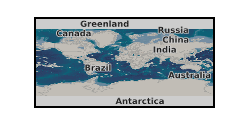
This project contributes significantly to the de-risking of a technology which has a significantly lower efficiency penalty than post-combustion capture using Monoethanolamine (MEA) scrubbing. The work here specifically targets two industrial sectors where MEA scrubbing is at a significant disadvantage (only ~ 30 % of the low-grade heat required for MEA scrubbing is present in a cement plant, for example [1]), and in both cases the spent CaO is valuable as an input to the process itself (either as the main feedstock for cement clinker production, or as a flux in iron production). The project builds on several current projects at both Imperial College and Cranfield University and offers excellent value for money because of these synergies. Grant number: UKCCSRC-C2-209.
-

Wind, sediment transport and surface morphological data collected at Sand Creek during a month long field campaign in March and April 2019 to investigate protodune development under bimodal winds. Data is used in the accepted paper ‘Dune initiation in a bimodal wind regime’, Journal of Geophysical Research: Earth Surface, by Delorme, P., Wiggs, G.F.S., Baddock, M.C., Claudin, P., Nield, J.M. and Valdez, A. (accepted 18th September 2020, article reference number 2020JF005757R; https://repository.lboro.ac.uk/articles/Dune_initiation_in_a_bimodal_wind_regime/12973817) Surface morphological data: This is terrestrial laser scanned (TLS) data collected of the creek sand surface during multiple visits. The data is raw point cloud format in text columns of x, y and z coordinate data. It has been orientation in local format (the origin is located at 13UTM 443152, 4184478). *_full_lowres cover the whole creek surface and the banks on either side. * is the date that the data was collected in yymmdd format. All other data is high resolution section of the actual creek surface within the channel. Each data set uses the same coordinate system. Data can be viewed in any spatial software. Wind and sediment data were collected from a fixed point on the eastern edge of the creek channel. The data is in csv file format with column titles and can be viewed in any text or database software. See Delorme et al. (accepted) for more details.
-
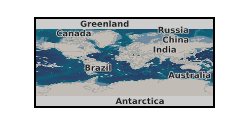
Direct geological observations made during field work, tied to positional information collected by hand-held GPS.
-
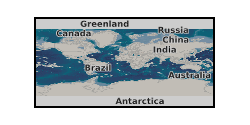
In this project we developed a new geobarometer for mafic and ultramafic igneous rocks, which can be used by the scientific community for a wide range of mineralogical and petrological studies. The material here include the description of the geobarometer, guidelines for its use, software and chemical data acquired for some case studies.
-
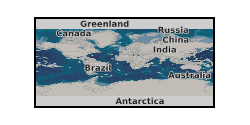
Major, trace element and REE analyses of muds and mudstones from selected intervals from all of the holes. Location of the drill holes are given in the Exp. 352 cruise report (Reagan et al)
-

Electron backscatter diffraction data for cumulates from the Skaergaard Intrusion of East Greenland. 12 samples from the Skaergaard Intrusion: 9 from the Layered Series, and 3 from the trough layering. Layered Series samples have a prefix LS; Trough layer samples have a prefix TB.
 NERC Data Catalogue Service
NERC Data Catalogue Service